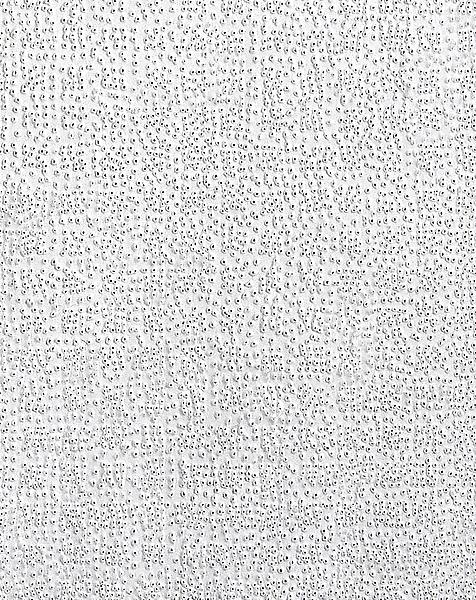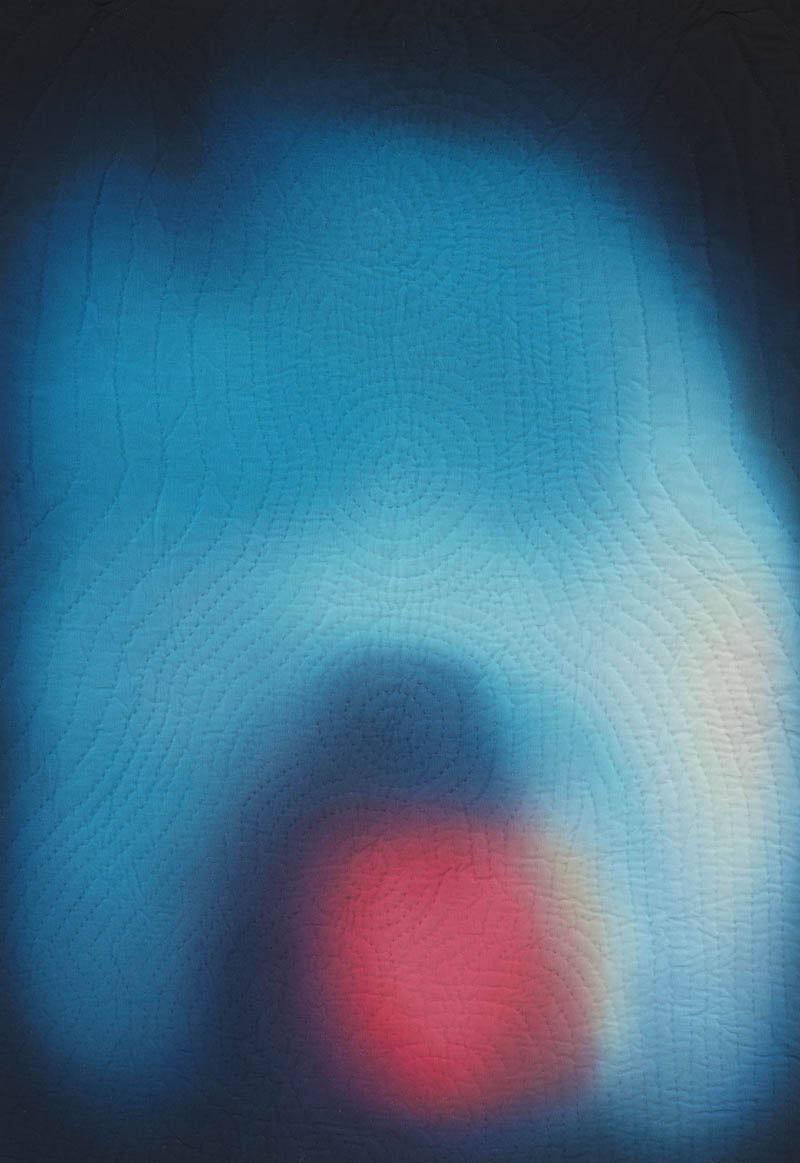Valley of the shadow…
2012
Etching and hand embroidery on Japanese goyu
20″ x 24″
(Muriel Guepin Gallery)

Valley of the shadow…
2012
Etching and hand embroidery on Japanese goyu
20″ x 24″
(Muriel Guepin Gallery)
À chaque stencil une revolution (for each stencil a revolution) at The Hammer Museum
À chaque stencil une revolution (for each stencil a revolution) at Miami Art Basel, 2010
via Pattern Pulp / image source, top / image source, bottom
Marie Tharp and Bruce Heezen, map of the North Atlantic, 1959
source: Columbia News, New York Times Book Review

Untitled, 1979 Detail Laminated paper pierced with sewing needle
My House 1937-1958, 1994, Etching printed in black on Arches Cover buff paper
source: Luhring Augustine
Tutto (Everything), 1992-3, embroidery on cloth (via MoMA)
Plenum #64, rice paper on canvas (source)
The Professor’s House, novel by Willa Cather, rearranged in 2001 (via Design Observer)

Elergy (Tulips), 2003 (source: Arthur Roger Gallery)
Stephen Sollins
Elergy (Tulips), 2003
embroidery and removed embroidery
49.5 x 53.25 inches

Mona Lisa's Aura, 2009
source: Anna Von Mertens, "Notes on Aura Portraits", At Length (2010)


Johannes Itten, "Education is revelation that affects the individual."--Gotthold Ephraim Lessing, The Education of the Human Race, 1780. From the series Great Ideas of Western Man., 1966, oil and pencil on canvas, Smithsonian American Art Museum, Gift of Container Corporation of America, 1984 (source: The Smithsonian American Art Museum and the Renwick Gallery)

"History of the Sky aims to convey the rhythms of the weather, the lengthening and shortening of days, and other atmospheric events on an immediate level. By recording the sky above the Exploratorium, a museum located at the edge of San Francisco Bay, programmer slash artists Ken Murphy has captured the clouds, fog, wind, and rain to form a rich visual texture, as sunrises and sunsets cascade across the screen. The 6-minute movie is based on a huge collection of images, which were captured at a 10 seconds interval. The visualization consists of a grid of 360 (so almost 365) unique movies, each representing one day of the year, organized chronologically, and cycling in parallel through a single 24-hour period." (via Information Aesthetics)

Memento (Sixteen Stone), 2008 | sources: White Cube

Satellite Collections,digital prints, 2009-2011
Jenny Odell: "In all of my prints, I collect things that I've cut out from Google Satellite View-- parking lots, silos, landflls, waste ponds. The view from a satellite is not a human one, nor is it one we were ever really meant to see. But it is precisely from this inhuman point of view that we are able to read our own humanity, in all of its tiny, reliably repetitive marks upon the face of the earth. From this view, the lines that make up basketball courts and the scattered blue rectangles of swimming pools become like hieroglyphs that read: people were here. At the same time, like any photograph, satellite imagery is also immediately an image of the past. That is, to look at satellite imagery is to look not only down upon ourselves but back in time, even if only by a matter of hours or days. In recording the moment at which things as bizarre as water parks and racetracks covered the earth, the photograph also implies that moment's own passing, encoding each tiny structure with vulnerability and pre-emptive nostagia. My desire to collect these pieces stems not only from the fascination of any collector but from a wish to save these low-resolution, sporadically-updated pixels--these strange pictures of ourselves--from time and the ephemerality of the internet. (source; found this project thanks to Design Sponge)

The Connected States of America, from MIT's senseable city lab, "illustrates the emerging communities based on the social interactions through the use of anonymized mobile phone data." As these project visualizations make clear, "administrative boundaries are often at odds if one compares these to a bottom up approach calculating the regional delineation only based on how people interact":